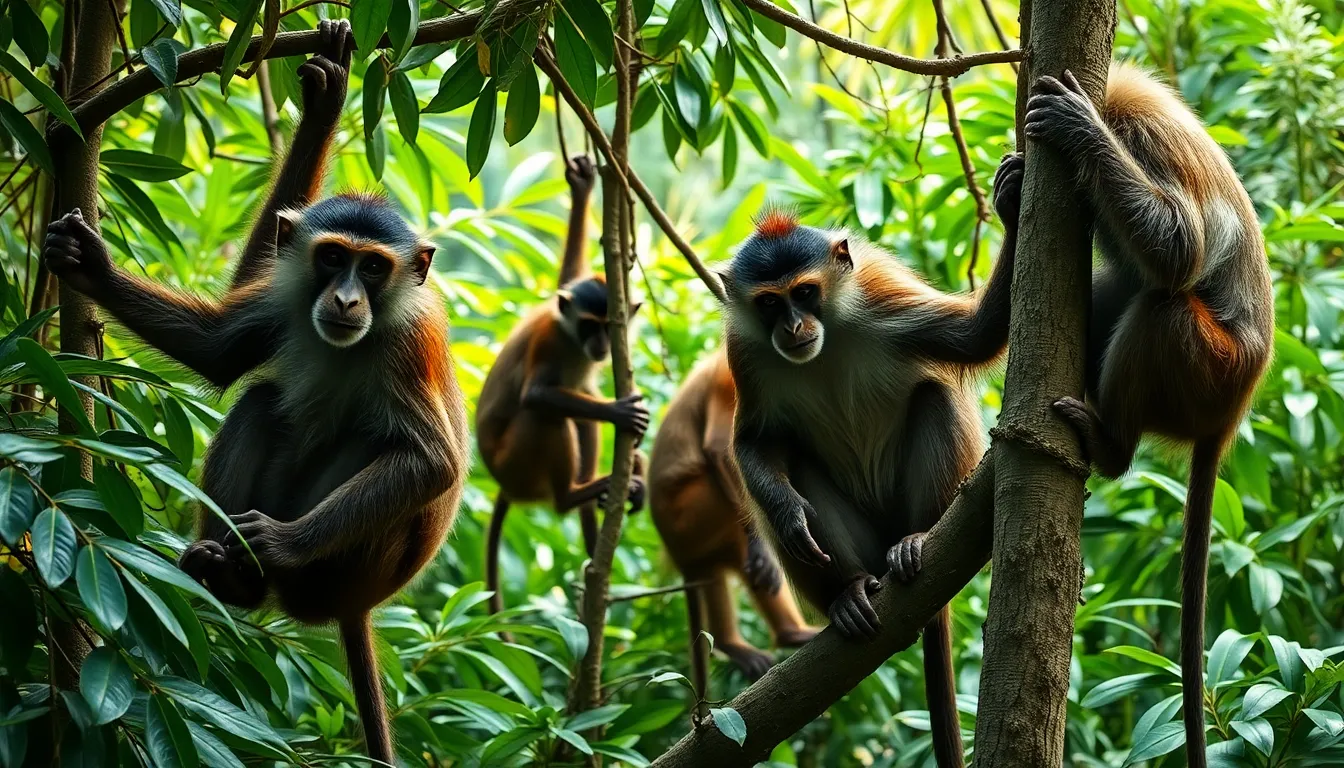Monkeys have fascinated humans for centuries with their intelligence and dexterity. One intriguing question often arises: do monkeys have opposable thumbs? This simple yet profound inquiry opens the door to understanding the evolutionary traits that set primates apart from other animals.
While many might associate opposable thumbs solely with humans, a closer look reveals that not all monkeys share this characteristic. Some species possess a unique grip that allows them to manipulate objects and navigate their environments effectively. Exploring the variations in thumb structure among different monkey species sheds light on their adaptations and behaviors in the wild.
Table of Contents
ToggleOverview Of Opposable Thumbs
Opposable thumbs define the ability to grasp and hold objects. Primarily found in humans, this trait allows for precise manipulation, contributing significantly to tool use and problem-solving abilities. In the primate family, thumb structure varies widely.
Monkeys generally exhibit two types of thumb configurations: opposable and non-opposable.
- Opposable Thumbs: Some monkey species, like the capuchin and the macaque, possess opposable thumbs that enable them to manipulate objects effectively. These monkeys can grip branches, open nuts, and use tools, showcasing advanced dexterity.
- Non-Opposable Thumbs: Monkeys such as the howler and the spider lack opposable thumbs. Instead, they have prehensile tails or enhanced finger and toe structures. These adaptations assist in grasping and climbing, compensating for the absence of opposable thumbs.
Variations in thumb structure reflect evolutionary adaptations to environmental demands. Monkeys that navigate complex trees benefit from specialized grips, while those that use tools exhibit greater opposability. Understanding these differences sheds light on their behavior and survival strategies in diverse habitats.
Understanding Monkeys

Monkeys, a diverse group within the primate family, exhibit fascinating variations in thumb structure. These variations directly impact their adaptability and survival strategies.
Types Of Monkeys
Monkeys fall into two primary categories: Old World monkeys and New World monkeys.
- Old World monkeys: Hefty and primarily found in Africa and Asia, Old World monkeys include species like macaques and baboons. Some have opposable thumbs, facilitating gripping and manipulation.
- New World monkeys: Residing in Central and South America, New World monkeys encompass species such as capuchins and howler monkeys. Many possess prehensile tails and varying thumb configurations, which aid in climbing and feeding.
Anatomy Of Monkey Hands
Monkey hands display distinct anatomical features tailored to their environmental needs.
- Opposable thumbs: Species like the capuchin and macaque showcase opposable thumbs, critical for grasping objects and utilizing tools.
- Non-opposable thumbs: Howler and spider monkeys lack opposable thumbs but excel in climbing with enhanced finger and toe structures.
- Prehensile tails: Certain monkeys leverage their tails as a fifth limb, providing additional support while navigating trees.
These anatomical traits reflect the evolutionary adaptations that contribute to the monkeys’ ability to thrive in their specific habitats.
The Science Behind Opposable Thumbs
Opposable thumbs play a vital role in primate dexterity and adaptability. Understanding their definition, function, and evolutionary significance sheds light on monkey characteristics.
Definition And Function
Opposable thumbs are the type of thumb structure that allows a thumb to touch the tips of other fingers on the same hand. This unique feature enables enhanced grasping and manipulation of objects. Monkeys with opposable thumbs, like capuchins and macaques, can perform complex tasks such as tool use, which requires precise handling and control. In contrast, monkeys lacking fully opposable thumbs, such as howler and spider monkeys, rely on their elongated fingers and toes to navigate and manipulate their environments effectively.
Evolutionary Significance
The evolution of opposable thumbs reflects the adaptations of monkeys to their environments. Old World monkeys, like macaques and baboons, often developed opposable thumbs due to their need for intricate manipulation within their habitats. These adaptations correlate with tool usage and social behaviors, enhancing survival chances. New World monkeys, such as capuchins, utilized opposable thumbs to forage for food and interact with their environment, while their prehensile tails provided additional support for climbing and grasping. This evolutionary trajectory highlights the versatility of thumb structures in enhancing the survival strategies of various monkey species.
Do Monkeys Have Opposable Thumbs?
Monkeys exhibit varying thumb structures, with some species possessing opposable thumbs while others do not. Understanding these differences clarifies the functional adaptations within different monkey species.
Different Species Comparison
Old World monkeys, such as macaques and baboons, can develop opposable thumbs. This structure enables them to grasp objects effectively. For instance, the thumb of a macaque can touch the tips of its fingers, facilitating precision handling of food and tools.
New World monkeys, like capuchins and howler monkeys, often exhibit thumb configurations that differ considerably from their Old World counterparts. Capuchins possess a thumb that allows for some level of opposition, aiding in their ability to forage and manipulate objects. In contrast, howler monkeys lack opposable thumbs altogether, relying instead on their long limbs and fingers for traversal and manipulation of branches.
Behavioral Implications
Opposable thumbs significantly influence behavioral capabilities in monkeys. Those with opposable thumbs, such as capuchins, demonstrate advanced problem-solving skills and tool use. They can engage in tasks like using sticks to extract insects from crevices.
Monkeys without opposable thumbs, like the howler monkey, exhibit adaptations focused on climbing. They excel at maintaining balance and movement in tree canopies due to their elongated fingers and toes. The reliance on physical adaptations over thumb structure highlights the varying evolutionary paths within monkey species, each tailored to their specific environments and survival needs.
Monkeys exhibit a fascinating range of adaptations that reflect their evolutionary paths. While some species possess opposable thumbs that enhance their ability to grasp and manipulate objects, others rely on different adaptations like elongated fingers or prehensile tails. These traits not only influence their daily activities but also shape their problem-solving skills and tool use. The diversity among monkey species showcases the remarkable ways in which evolution tailors physical characteristics to meet environmental demands. This intricate relationship between anatomy and behavior underscores the complexity of primate evolution and the ongoing intrigue surrounding these intelligent creatures.









